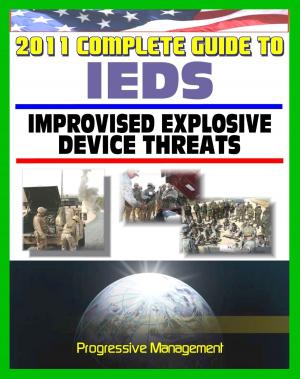Deterring North Korea from Using WMD in Future Conflicts and Crises: Nuclear, Chemical, Biological Weapons, Deterrence by Punishment, Understanding North Korean Provocations, Escalatory Brinksmanship
Nonfiction, History, Military, Nuclear Warfare| Author: | Progressive Management | ISBN: | 9781370024780 |
| Publisher: | Progressive Management | Publication: | March 29, 2017 |
| Imprint: | Smashwords Edition | Language: | English |
| Author: | Progressive Management |
| ISBN: | 9781370024780 |
| Publisher: | Progressive Management |
| Publication: | March 29, 2017 |
| Imprint: | Smashwords Edition |
| Language: | English |
This excellent report has been professionally converted for accurate flowing-text e-book format reproduction. For nearly 60 years, North Korea has determinedly pursued the development of weapons of mass destruction (WMD), usually defined as chemical, biological, radiological, and nuclear (CBRN) weapons. In recent years, it has used its nuclear weapons to deter threats and to coerce its neighbors during crisis. As the North Korean regime continues to suffer many failures, it may someday lash out and cause a major war in northeast Asia, or its government may collapse into civil war and anarchy. With almost no chance of winning a conflict limited to conventional weapons and having invested so much of their limited resources in WMD, North Korea's leaders are likely to use these weapons in conflicts or further crises. North Korean WMD could cause immense damage to the populations and economies in northeast Asia, potentially destabilizing the region for many years.
It is therefore incumbent on the United States and its allies to develop means to deter North Korea's use of WMD. But doing so is not easy. The United States and the Republic of Korea (ROK) have clearly failed to deter multiple North Korean provocations associated with WMD. Moreover, the North Korean leaders appear insensitive to the kind of "assured destruction" nuclear weapon retaliatory threats against cities and industry that formed the basis for Cold War deterrence. Instead, deterrence of North Korean WMD use needs to be based more on the ability to defeat that use and deny its objectives while still threatening retaliation that would undermine or destroy the North Korean regime.
This paper describes such a deterrent approach, first by characterizing North Korea as a failing state—one which has used crises and may yet try to use conflict to strengthen the regime. It then addresses the nature of North Korea's WMD threat, how that threat might be used, and the damage that could result. The study concludes by discussing how the United States and the ROK might deter North Korean WMD threats in conflict and crisis.
This excellent report has been professionally converted for accurate flowing-text e-book format reproduction. For nearly 60 years, North Korea has determinedly pursued the development of weapons of mass destruction (WMD), usually defined as chemical, biological, radiological, and nuclear (CBRN) weapons. In recent years, it has used its nuclear weapons to deter threats and to coerce its neighbors during crisis. As the North Korean regime continues to suffer many failures, it may someday lash out and cause a major war in northeast Asia, or its government may collapse into civil war and anarchy. With almost no chance of winning a conflict limited to conventional weapons and having invested so much of their limited resources in WMD, North Korea's leaders are likely to use these weapons in conflicts or further crises. North Korean WMD could cause immense damage to the populations and economies in northeast Asia, potentially destabilizing the region for many years.
It is therefore incumbent on the United States and its allies to develop means to deter North Korea's use of WMD. But doing so is not easy. The United States and the Republic of Korea (ROK) have clearly failed to deter multiple North Korean provocations associated with WMD. Moreover, the North Korean leaders appear insensitive to the kind of "assured destruction" nuclear weapon retaliatory threats against cities and industry that formed the basis for Cold War deterrence. Instead, deterrence of North Korean WMD use needs to be based more on the ability to defeat that use and deny its objectives while still threatening retaliation that would undermine or destroy the North Korean regime.
This paper describes such a deterrent approach, first by characterizing North Korea as a failing state—one which has used crises and may yet try to use conflict to strengthen the regime. It then addresses the nature of North Korea's WMD threat, how that threat might be used, and the damage that could result. The study concludes by discussing how the United States and the ROK might deter North Korean WMD threats in conflict and crisis.















